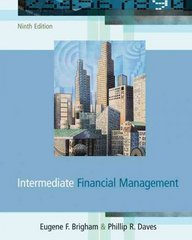Questions 2 - 6 are all based on the following information. Pam Denic, the CEO of Vidco Global Corporation, believes that the firm could create additional value by adding protective face shields to its product mix. Machinery used in producing the shields would cost $16,100,000. According to Ms. Denic's projections, the subsequent net cash flows the company would generate for the investors if it entered the shield business would be $2,150,000 per year for 13 years. These are the only cash flows expected. The firm's annual weighted average cost of capital for a project of this type is 8.6%. QUESTION: PLEASE REFER TO THE ATACHMENT TO QUESTION 4 IN ANSWERING. Which of the five equations shown would you use in computing the shield equipment project's INTERNAL RATE OF RETURN (IRR)? FIL 240 Fall 2020 Exam Part B Att #4.pdf 87 KB O A. Equation 1 B. Equation 2 OC. Equation 3 D. Equation 4 E. Equation 5 13 a. EQUATION 1: - $16,100,000+ $2,150,000 ( 1+IRR IRR $2,150,000 b. EQUATION 2: $2,150,000+ $16,100,000 1-(+18) $0 IRR c. EQUATION 3: $16,100,000+ $2,150,000 1-G+iR 1+IRR IRR = $16,100,000 13 d. EQUATION 4: - $16,100,000 + $2,150,000 G+IRR) IRR $0 13 e. EQUATION 5: $16,100,000 1+IRR IRR = $2,150,000 Questions 2 - 6 are all based on the following information. Pam Denic, the CEO of Vidco Global Corporation, believes that the firm could create additional value by adding protective face shields to its product mix. Machinery used in producing the shields would cost $16,100,000. According to Ms. Denic's projections, the subsequent net cash flows the company would generate for the investors if it entered the shield business would be $2,150,000 per year for 13 years. These are the only cash flows expected. The firm's annual weighted average cost of capital for a project of this type is 8.6%. QUESTION: PLEASE REFER TO THE ATACHMENT TO QUESTION 4 IN ANSWERING. Which of the five equations shown would you use in computing the shield equipment project's INTERNAL RATE OF RETURN (IRR)? FIL 240 Fall 2020 Exam Part B Att #4.pdf 87 KB O A. Equation 1 B. Equation 2 OC. Equation 3 D. Equation 4 E. Equation 5 13 a. EQUATION 1: - $16,100,000+ $2,150,000 ( 1+IRR IRR $2,150,000 b. EQUATION 2: $2,150,000+ $16,100,000 1-(+18) $0 IRR c. EQUATION 3: $16,100,000+ $2,150,000 1-G+iR 1+IRR IRR = $16,100,000 13 d. EQUATION 4: - $16,100,000 + $2,150,000 G+IRR) IRR $0 13 e. EQUATION 5: $16,100,000 1+IRR IRR = $2,150,000








